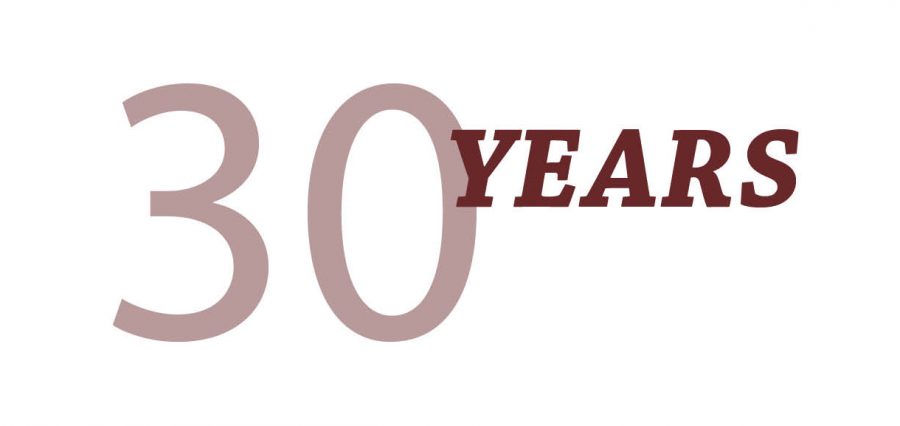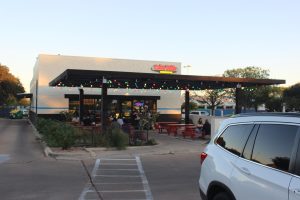30 years of teachers
October 17, 2017
It takes something special to create a long lasting impression on a community. To keep thriving as one of the greatest high schools in the state of Texas and excel in prideful performance, a grand foundation must be established through the facility and its people. Celebrating this year’s 30th anniversary, James Bowie High School continues to thrive as its history grows older.
During the AISD City Council meeting of 1975, Bowie’s spirit began before school came into session, when Kent Ewing made it his goal to be the first principal of the new southwest school. He was picked out of the 112 applicants because of his passion.
“There were several years during in-service, before school began in August, that [ Ewing ] would charter buses and take us to eat barbecue,” government and street law teacher Patricia Maney said. “This was a great way for me to meet teachers that had been here at Bowie from the beginning.”
Between opening the school and kicking the first year off, tradition-building helped create what Bowie symbolizes today.
“All of us teachers had the opportunity to come together, meeting of the minds, and actually start some of the traditions that we enjoy today,” English IV teacher Joyce Brisco said. “We decided upon the mascot, chose the colors, and implemented the tradition of Bulldogs and Hotdogs.”
Planning for Bowie’s success had to start with the end in mind. To do so, the faculty and administration came together and put all of their expectations and visions for the school to formulate a general goal.
“We all had a vision,” Brisco said. “Nothing comes to a sleeper but a dream.”
However, for there to be a foundation, the make-up must go farther than traditions for a school to stand for thirty years.
“[ Bowie ] was built on the love and the passion that teachers and the administration and the students have for the school, the community,” Brisco said.
When describing how Bowie came to stand out from the beginning, Brisco explains it as starting with the teachers and faculty members bringing their own uniqueness and diversity to the school.
“What is it that’s going to make Bowie special? What are you going to bring to Bowie that is unique?,” Brisco said. “I can’t make that special for you, you have to make it special for yourself.”
Academic Dean Susan Leos sees the Bowie history as an onion analogy made by educational researcher and writer, Thomas Sergiovanni, who describes the culture of an institution or organization as being made up of different layers, including a core in the middle.
“I don’t know if we can really define [ the core ] because pulling back all the different layers, you’re taking away from the organization at the same time,” Leos said. “Bowie has the strongest core of any school, of any onion, because there’s something about the people, teachers, kids, parents.”
From the start, the “core” radiated a sense of pride and faith in the school that has continued to stay with the many generations it’s seen.
“There’s something about even the community that believes in this place,” Leos said. “There’s still been this focus on the Bowie core and what it means to be at Bowie where you are proud of yourself, you’re proud of your academics, you’re proud of your courses and we do our best to support each other.”
As the years passed, the “core” has stayed the same when change started occurring, for example, with students.
“We’re continually expecting more of our students, high school is more rigorous now than before,” World history teacher and Bowie graduate Wendy Uzzle said. “High schools keep raising the bars and the students keep rising to it and it’s amazing they keep achieving it.”
With Advanced Placement classes entering the educational scene across Texas in the 90’s, Bowie shifted its ways by setting higher goals for students.
“There are many more rigorous requirements on our kids nowadays,” Leos said. “There wasn’t state testing at the time and, if there was, it was much easier.”
With harder classes came changes in technology, causing Bowie and its faculty to morph the traditional classroom and halls.
“More of the books were on-line so we stopped using lockers,” Leos said. “We did have a year where students still had some books and some teachers were doing things on-line.”
The introduction of flipped classrooms, a system in which students can use technology at home and work with in the classroom, was a major transition from the traditional classes.
“Students who don’t have access to computers at home can get a hard copy of the work at school and those who do have computers at home, they can use their computers at home as well as have an extra copy of the work,” Brisco said.
Being able to see a transition from tradition to a modern classroom is something Brisco has been able to experience first hand.
“I think that’s pretty phenomenal since I’ve been here for so many years and seen so many changes,” Brisco said.
Modern education also gave teachers the ability to drive their own professional learning, meaning they have free-will to choose what they think is necessary for the course in contrast to “going by the book”.
“That’s had a big impact on the students in the end, because we keep growing our students through our teachers who are teaching what they think is most important and what matters more instead of going by the book or the district
“One of the big benefits is us coming up with FIT and how we can capture time in the day to help students,” Leos said. “It really opens the horizons for the students.”
Besides educational shifts, social challenges have come along Bowie’s timeline as well.
“I think with change in any institution there are challenges so we must learn with change to adapt to change and to address the changing trends that comes into any institution that is thirty years old,” Brisco said.
Some of these challenges brought dark times, evident when the news hit America, and Bowie, of the 9/11 terrorist attacks.
“The reality innocent men, women and children , some of whom could possible be family or friends of my students incomprehensible,” Brisco said. “Bowie, like the rest of the world, was paralyzed.”
Even when faced with tragedy, the Bowie community was able to stand together within those 24 hours.
“In the spirit of America and her core values, her ideals, my speech and debate team were summoned to meet in my classroom at lunchtime,” Brisco said.
To support the people affected, Brisco and her forensics team put forth a donation system. In return, the donors received a blue, white, or red ribbon.
“With 100 percent of support from Bowie’s administration, faculty, staff and the community, students raised over $8,000 in less than 24 hours for the Red Cross,” Brisco said.
The amount of money the school raised in such a short period of time also impacted the great community at large, according to Brisco.
“Bowie was the first of its kind raise money and give it to the Red Cross, resulted in an invitation to appear on KVUE television and share their story. This was the proudest moment for me, not only as Forensics Director, but as an educator,” Brisco said.
Most of the social changes haven’t necessarily affected the school but rather the students.
“Keeping the premise that we are about teaching students, but also recognize that there is a part of our student body that we have to make sure those students are addressed,” Brisco said. “Their concerns about being inclusive, their voice.”
Some of these shifts involved difficult conversations between the administration and the teachers, specifically with literature and history.
“We had a group that met where we discussed if the literature we are reading reflective of diversity, are we reflecting all of the different types of people at our school with what we read and do,” Leos said.
Across the state, grouping schools together based on ethnic make-up, how economically disadvantaged the students are, and other social demographics have created a barrier from diversity, including at Bowie.
“We’re smart enough to know, and we talked about in this meeting, that sometimes outside of Bowie they see us as a privileged school,” Leos said. “They see us as a white school.”
With there being more inclusivity since the school began, one of the more recent challenges has to make sure everyone has a voice.
“What can we do educationally to present our kids with a world-view, with a diverse view, in every class, because Bowie is not perfect and that’s the kind of thing that may be difficult or challenging at Bowie,” Leos said.
Now in it’s thirtieth year, administration is striving to make this a top priority.
“Being aware, human, and appreciative of different cultures and diversity,” Brisco said. “I think that’s one of the challenges that any institution has to maintain that everybody is inclusive, everyone is treated equally, and feeling that everyone has a voice.”
One way the school has addressed this is by dedicating weeks or a month to a certain group of individuals to be celebrated.
“We had Black History Month, Women’s Week, and Pride Week,” Uzzle said.
The biggest approach administration has taken towards exceeding this goal is through the morning announcements, an idea implemented by Leos.
“Last year, we opened up our PA announcements,” Leos said. “As part of our teacher-leadership group, we need to make sure we have those voices.”
When asked why she’s stayed from the first year to the thirtieth, Brisco believes the school has become a part of her life.
“You meet new people, you formulate a family, and the kids become like your offspring,” Brisco said. “It’s really hard to let that go.”
For all these years, the school has never let that “core” die down.
“Bowie is probably one of the most unique, innovative institutions that I’ve ever had the opportunity and the privilege in which to work,” Brisco said. “The community, the atmosphere, you’re just drawn to that.”














Tashara Mitchell • Oct 25, 2017 at 4:11 pm
This was a well written article. Great insight into Bowie’s History.